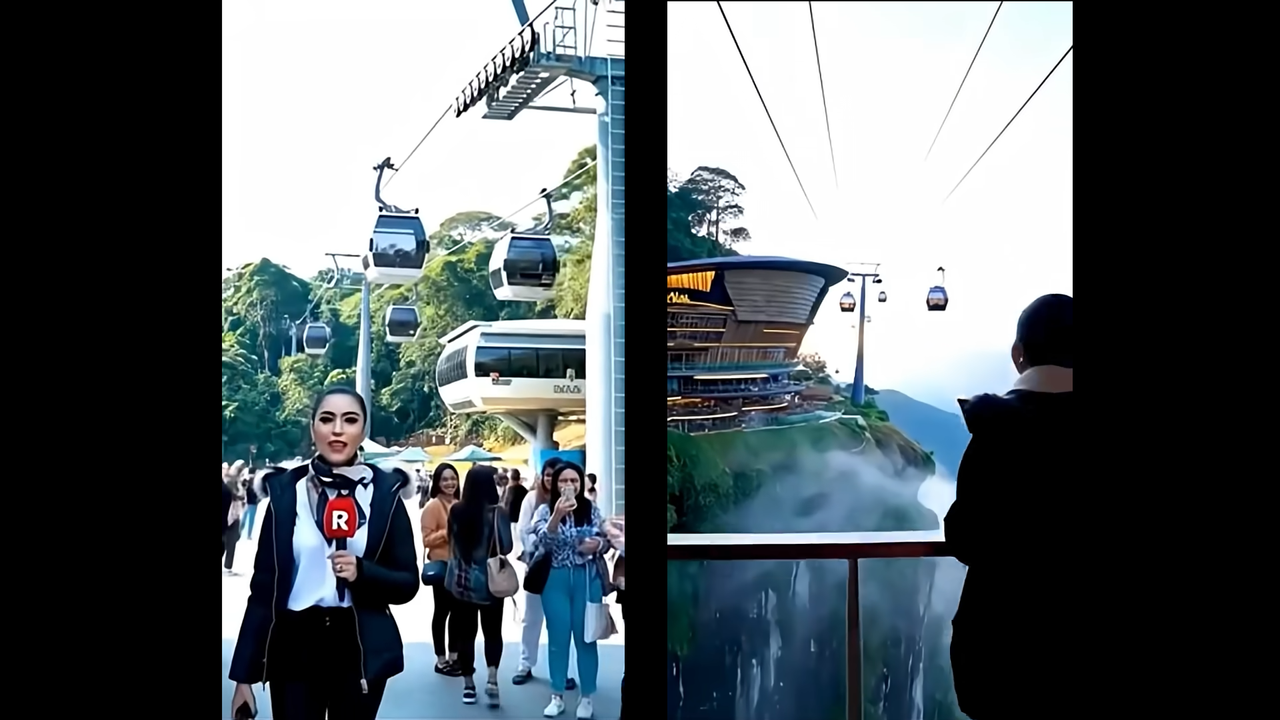The Rise of AI-Generated Travel Experiences
A couple, excited and eager, spent hours traveling to a mountaintop in hopes of taking a ride on the Kuak Skyride. They had seen it online, with videos showing smiling tourists gliding along and a TV journalist narrating the experience. However, upon arrival, they found nothing but a small town and confused locals who had no idea what they were talking about. It turned out that the video was an AI-generated creation, and the couple had been deceived.
This story, which highlights the growing influence of artificial intelligence in digital content, is not as unique as it may seem. In today’s world, where AI can create realistic videos and images, it’s becoming increasingly difficult to distinguish between what is real and what is fabricated. This issue is especially relevant when it comes to travel planning, as people often rely on online content to decide where to go next.
The video in question was made using Veo 3, Google’s latest AI video engine. A small logo in the corner of the video indicates its origin, but even without this clue, the appearance of the people and structures in the video has a distinct AI quality. For those unfamiliar with deepfakes or AI-generated content, it might be easy to overlook these signs. After all, it seems absurd to doubt a well-made tourist video.
However, the reality we now face is that AI can sell more than just products—it can also sell places. These places may not exist at all, making it crucial for consumers to be vigilant. While slightly incorrect spelling or suspicious URLs are common red flags, they are relatively minor compared to the potential for AI-generated travel experiences.
It remains unclear whether the video was created with malicious intent or simply as a misguided attempt at content creation. Many people might dismiss such concerns, thinking it could never happen to them. But everyone has blind spots, and AI is becoming increasingly adept at exploiting them.
This situation represents a more serious use of AI video compared to other examples, such as cats pretending to be Olympic divers. Still, the need to pay close attention to the clues that indicate an AI creation is universal. The era of visual trust is over, and in the age of AI, seeing something is just the first step in verifying its authenticity.
Navigating the New Reality of AI-Generated Content
While it’s not necessary to abandon all travel plans, the average person now needs a new level of consumer awareness. This awareness must extend beyond traditional scams like Nigerian princes and surprise crypto pitches to include video illusions and AI-generated travel influencers. These influencers can promote places that no human could realistically visit, creating entirely fictional experiences.
Additionally, real-world locations may have review sections flooded with AI-written testimonials that praise places with exaggerated claims. These reviews often describe activities or attractions that do not exist outside of the AI’s imagination. As a result, travelers must be cautious and verify information through multiple sources.
To deal with this challenge, individuals should be skeptical of content that seems too good to be true. Cross-checking information across different platforms can help determine if something is real. Using tools like reverse image searches or checking public social media posts can also be useful. When reviewing images and videos, it’s important to look for imperfections. If no one in a crowd shot is frowning or sneezing, it might be a sign that the content is fabricated.
This shift in how we perceive and interact with digital content is unfortunate. It means that even beautiful locations shown in videos may be met with doubt rather than excitement. However, this is the cost of living in a world where anyone can create realistic illusions of almost-real worlds. To ensure that their travels are based on more than just pixels and algorithms, people must take additional steps to verify the authenticity of the information they find online.
Staying Vigilant in the Age of AI
As AI technology continues to advance, it becomes increasingly important to stay informed and aware of the potential for deception. Whether it’s travel videos, product advertisements, or social media content, the line between reality and fabrication is becoming more blurred. By developing a critical eye and using available tools, individuals can better navigate this new digital landscape.
In conclusion, the rise of AI-generated content presents both challenges and opportunities. While it can create stunning visuals and immersive experiences, it also requires a higher level of scrutiny from consumers. By staying informed and cautious, people can enjoy the benefits of AI while avoiding its pitfalls.







